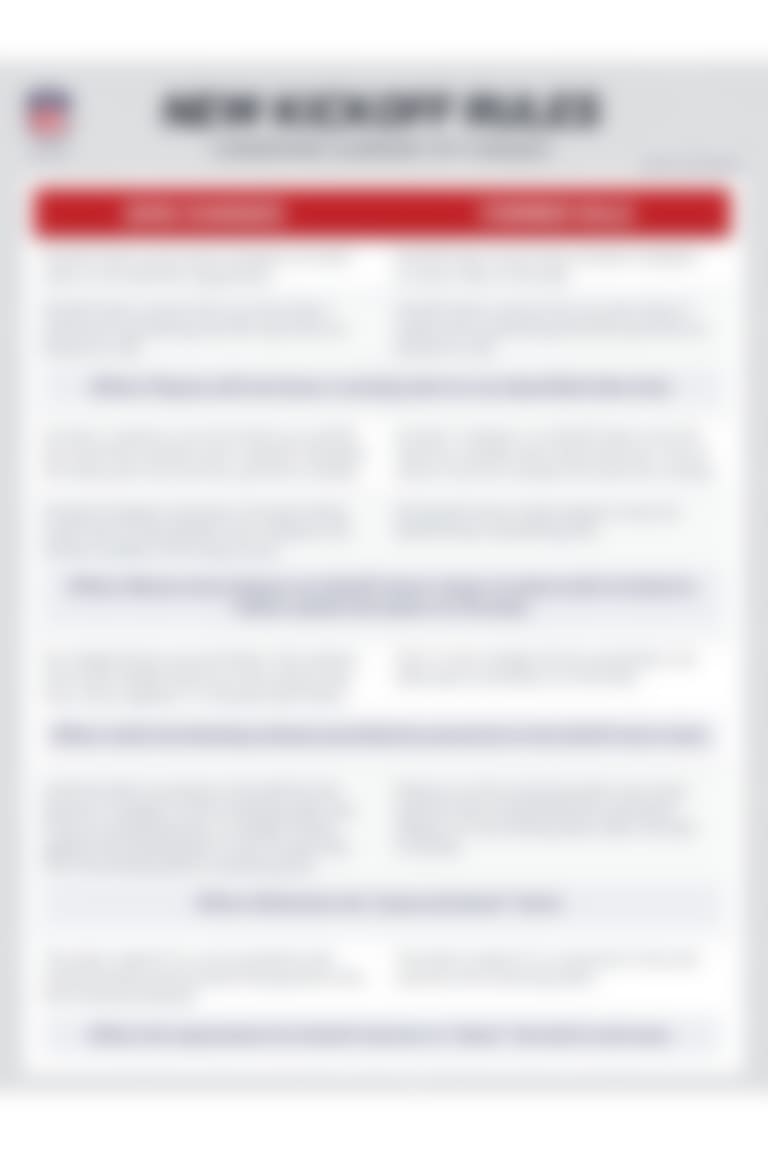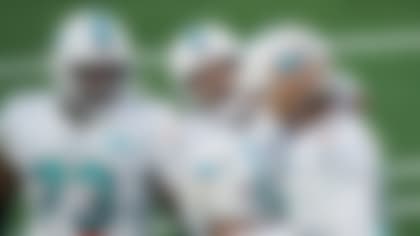Advancing Player Health and Safety on the Field
NFL clubs gathered this spring to vote on significant rules changes that aim to improve player safety.
The NFL Competition Committee proposes rules changes to try to improve the game. The committee consults with players, coaches, physicians and safety experts—including the NFL's medical committees and the NFL Players Association. The NFL also made an educational video (see above) for clubs and staff about the data and analysis that led to the "Use of the Helmet" rule change.
The Rules
Three health and safety related playing rules were approved:
- Makes permanent the playing rule that changes the spot of the next snap after a touchback resulting from a free kick to the 25-yard line.
- Playing Rule Proposal #11, Article 8—Use of the Helmet—It is a foul if a player lowers his head to initiate and make contact with his helmet against an opponent. It is a penalty that will result in the loss of 15 yards. If the foul is by the defense, it is also an automatic first down. The player may be disqualified.
- Modifies the kickoff play for one year only.
Throughout the offseason, the league is working with players, coaches, officials, medical personnel, media and fans to communicate and educate about the new helmet and kickoff rules.
Driving Significant Change Through Data
A comprehensive review of data and video led by the NFL's medical and engineering advisors demonstrated the increased risk associated with lowering the head to align the neck and spine before initiating contact. This behavior put both the player making the contact and the player struck at greater risk of injury.
"We do a video review of each and every concussion," said Dr. Jeff Crandall, Director of the Center for Applied Biomechanics at The University of Virginia and Chairman of the NFL Engineering Committee. "We've been doing it the last three years, and we started to notice when we looked at the video that a large number of players were leading with their helmet, initiating contact that caused concussions."
The league's medical and engineering experts presented to the Competition Committee and the NFL Owners Health & Safety Committee an analysis of the latest injury data.
"We had examples on field of concussions occurring under leading with the helmet, and we had the biomechanical explanation of why it was risky," said Dr. Crandall. "So when you put these two together, it makes a pretty compelling case that we need to get this behavior out of the game."
The clubs unanimously agreed to a rule change that aims to reduce the instance of certain techniques that put players at risk.
"There are so many hits that we saw where a player lowered his head, delivered the hit, and either injured himself or the person he was contacting," said Rich McKay, President and CEO of the Atlanta Falcons and Chairman of the NFL Competition Committee. "So, we felt it was time for a change of this magnitude."
"This new rule is a huge component [of our injury reduction strategy], and it came based on our review of all the data and biomechanics to figure out what changes we can make immediately that could really impact the incidence of concussion," said Dr. Allen Sills, NFL Chief Medical Officer.
The ejection standards to go along with the "Use of the Helmet" rule are:
- Player lowers his helmet to establish a linear impact body posture prior to initiating and making contact with the helmet;
- Player delivering the blow had an unobstructed path to his opponent;
- Contact was clearly avoidable; Player delivering the blow had other options.
Watch this video to learn more about the helmet rule and enforcement specifics.
Changes to the Kickoff
The Competition Committee worked with special teams coaches and NFL medical and engineering advisors to consider changes to the kickoff play during an owners and coaches session in early May. NFL clubs approved the Competition Committee's proposal during the Spring League Meeting.
The comprehensive review of injury data and video showed that over the course of all games during the 2015-2017 seasons, the kickoff represented only six percent of plays but 12 percent of concussions. Players had approximately four times the risk of concussion on the kickoff compared to running or passing plays. The changes to the kickoff rule addressed the components that posed the most risk, like the use of a two-man wedge, while maintaining the play.
"We want to continue to try to improve the safety of [the kickoff] and preserve the play," said Atlanta Falcons President Rich McKay, the chairman of the competition committee. "And I think we've taken a big step toward that."
See the new kickoff changes here.


Coordinating Across Disciplines to Try to Improve Player Safety
NFL Commissioner Roger Goodell emphasized the teamwork behind the new rules. "I don't think in my 37 years, I've seen quite the coordination between various disciplines—whether it's the football people, the officiating, our Competition Committee, various other people that have a stake in it, including our medical teams," said Goodell. "Everyone is enthusiastically behind this and supportive of this."
As the NFL continuously learns more about player health and safety, the league evaluates and changes rules to improve the game and try to enhance protections for players.




